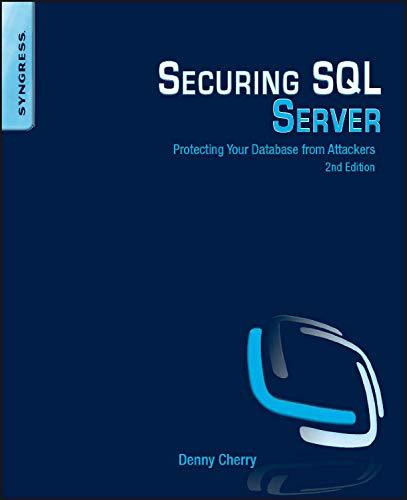Question
A data type in which the values are made up of components, or elements, that are themselves values is known as an object data type.
A data type in which the values are made up of components, or elements, that are themselves values is known as an object data type. Select one: True False
---------------------------------------------------------
Question 2 Given any real numbers a and b, exactly one of the following relations holds: a < b, a > b, or a = b. Thus when you can establish that two of the relations are false, you can assume the remaining one is true. This principle is known as: Select one: a. trichotomy b. abstraction c. the distributive property d. the transitive property
---------------------------------------------------------
Question 3 Given the following code what will the output be? def find(strng, ch): index = 0 while index < len(strng): if strng[index] == ch: return index index += 1 return -1 print (find("the doctor is in", '*')) Select one: a. -1 b. 0 c. 12 d. 13
-----------------------------------------
Question 4 Given the following code, what will the output be? import string index = "Ability is a poor man's wealth".find("w") print(index)
Select one: a. 24 b. 0 c. 23 d. -1
----------------------------------------------------
Question 5 A parameter written in a function header with an assignment to a default value which it will receive if no corresponding argument is given for it in the function call is called an optional parameter.
Select one: True False
----------------------------------------------------------------
Question 6 What output will the following code produce? print ("%s %d %f" % (5, 5, 5))
Select one: a. 5 5 5.000000 b. 5 5 5 c. 5 5.000000 d. 0 5 5.0
----------------------------------------------------------
Question 7 To create a new object that has the same value as an existing object is know as creating an alias.
Select one: True False
-----------------------------------------------
Question 8
What output will the following code produce? mylist = [ [2,4,1], [1,2,3], [2,3,5] ] a=0 b=0 total = 0 while a <= 2: while b < 2: total += mylist[a][b] b += 1 a += 1 b = 0 print (total)
Select one: a. 14 b. 23 c. 0 d. 13
---------------------------------
Question 9 The following code: for fruit in ["banana", "apple", "quince"]: print (fruit) will produce the following output: banana apple quince
Select one: True False
------------------------------
Question 10 Given the following code, what will the output be? mylist = ["now", "four", "is", "score", "the", "and seven", "time", "years", "for"] a=0 while a < 7: print (mylist[a],) a += 2
Select one: a. now is the time b. now is the time for c. for score and seven years d. now four is score the and seven time years for
------------------------------
Question 11
The output of the following code will be: fruit = "banana" letter = fruit[1] print (letter)
Select one: a. b b. a c. n d. banana
-------------------------------------------
Question 12 A variable that has a data type of "str" cannot be a compound data type.
Select one: True False
--------------------------------------------
Question 13 Traversal can only be accomplished with the "while" loop.
Select one: True False
------------------------------------------------
Question 14 Not yet answered Marked out of 1.00 Not flaggedFlag question Question text Strings are easily changed with string slices.
Select one: True False
-------------------------------------------------
Question 15 The elements of a list are immutable. Select one: True False
Step by Step Solution
There are 3 Steps involved in it
Step: 1

Get Instant Access to Expert-Tailored Solutions
See step-by-step solutions with expert insights and AI powered tools for academic success
Step: 2

Step: 3

Ace Your Homework with AI
Get the answers you need in no time with our AI-driven, step-by-step assistance
Get Started


